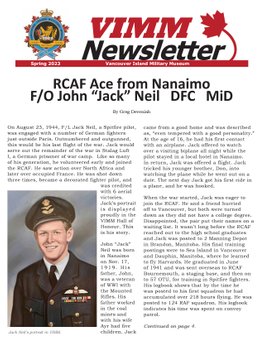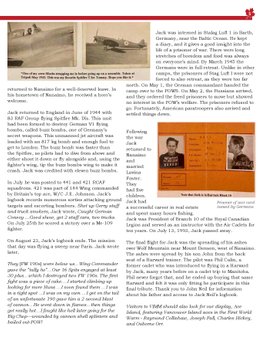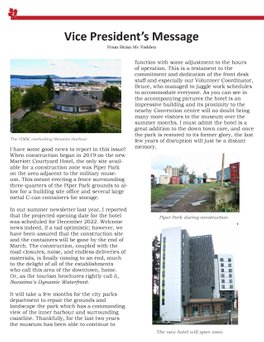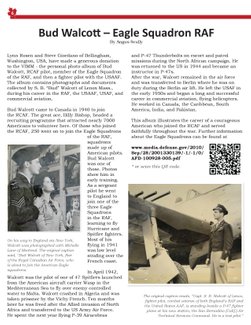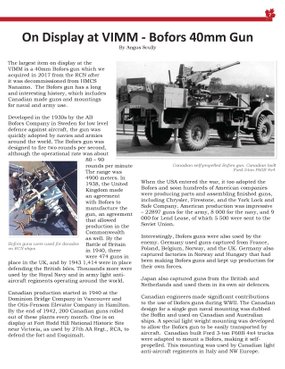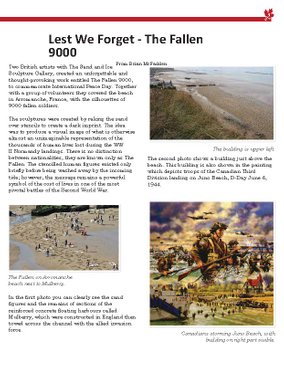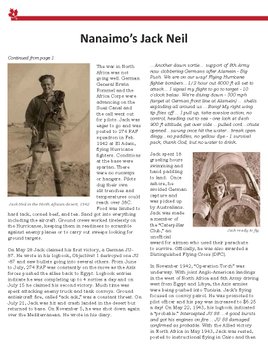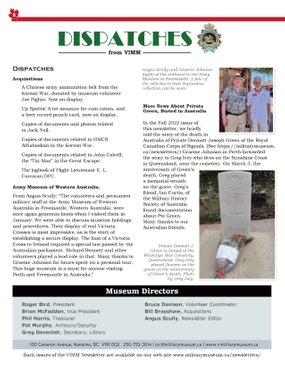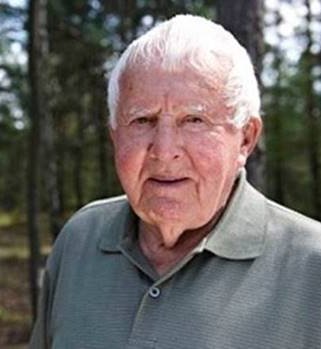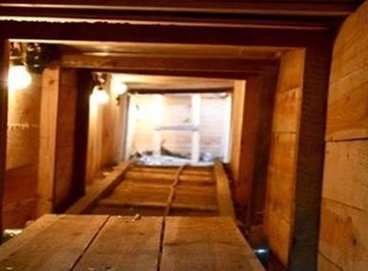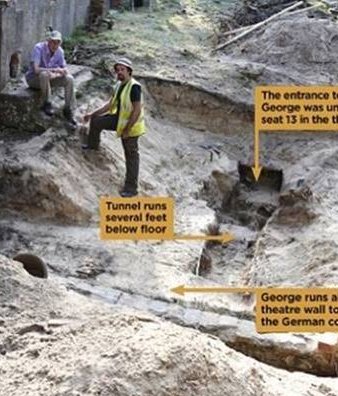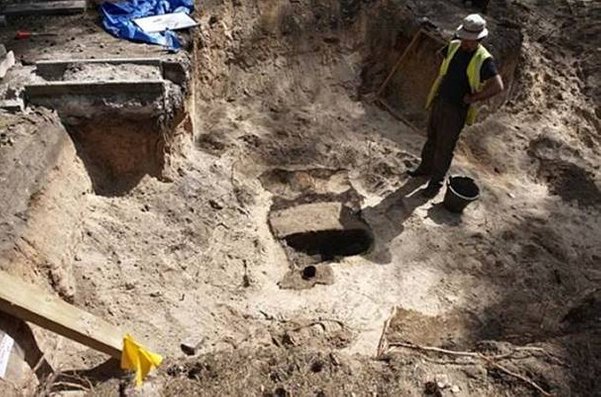Vancouver Island Military Museum Spring 2023 newsletter
Click on pages to enlarge
The Great Escape:
A Nanaimo story
by Ted Barris
John Colwell
Many of the prominent people involved in planning and overseeing the escape were Canadian. John Colwell, nicknamed The Tin Man, was from Nanaimo. A copy of John's very detailed diary with illustrations is housed at the Vancouver Island Military Museum in Nanaimo.
It was clear that John was very adept at fashioning digging tools, metal containers, stoves, etc. from metal. He helped with escape planning, organization and made many of the tunneling tools. He was not a part of the escape goup as his number was well over 100 and only 76 made it out.
John survived the war and returned to his dairy farm on White Rapids Road in Nanaimo. He carried on with his resourceful talents and was the founder of the Jonanco Hobby Club. He donated land for the club workshop and the club continues to this day. John died in 2007. https://jonanco.ca/history/
The Great Escape Tunnel
Untouched for almost seven decades, the tunnel used in the Great Escape has finally been unearthed. The 111 yard passage nicknamed Harry by Allied prisoners, was sealed by the Germans after the audacious break-out from the POW camp Stalag Luft III in western Poland. Despite huge interest in the subject, encouraged by the film starring Steve McQueen, the tunnel was undisturbed over the decades because it was behind the Iron Curtain and the Soviets had no interest in its significance.
But at last British archaeologists have excavated it, and discovered its remarkable secrets.
Many of the bed boards which had been joined to stop it from collapsing were still in position. And the ventilation shaft, ingeniously crafted from used powdered milk containers known as Klim Tins, remained in working order.
Scattered throughout the tunnel, which is 30 feet below ground, were bits of old metal buckets, hammers and crowbars which were used to hollow out the route.
A total of 600 prisoners worked on three tunnels at the same time. They were nicknamed Tom, Dick, and Harry, and were just two feet square for most of their length. It was on the night of March 24 and 25, 1944, that 76 Allied airmen escaped through Harry.
One third of the 200 prisoners, many in fake German uniforms and civilian outfits and carrying false ID papers, who were meant to slip away, managed to leave before the alarm was raised when escapee number 77 was spotted.
Tunnel vision: A tunnel reconstruction showing the trolley system
Only three made it back to Britain. Another 50 were executed by firing squad on the orders of Adolf Hitler, who was furious after learning of the breach of security. In all, 90 boards from bunk beds, 62 tables, 34 chairs, and 76 benches, as well as 1000s of items including knives, spoons, forks, towels and blankets, were squirreled away by Allied prisoners to aid the escape plan under the noses of their captors.
No Americans were involved in the operation. Most were Brits and Canadians, (all the tunnelers were Canadian personnel with backgrounds in mining) Poland, New Zealand, Australia, and South Africa.
The site of the tunnel, recently excavated by British archaeologists. The latest dig, over three weeks in August, located the entrance to Harry, which was originally concealed under a stove in Hut 104.
The team also found another tunnel, called George, whose exact position had not been charted. It was never used as the 2,000 prisoners were forced to march to other camps as the Red Army approached in January 1945.
Watching the excavation was Gordie King, 91, an RAF radio operator, who was 140 in line to use Harry and therefore missed out. 'This brings back such bitter-sweet memories', he said as he wiped away tears. 'I'm amazed by what they've found. '
Gordie King, 91, made an emotional return to Stalag Luft III.
Many recent generations have no true notion of the cost in lives and treasures that were paid for the liberties that we enjoy in the U.S. today. They also have no idea of the lengths that the "greatest generation" went to in order to preserve those liberties. Below is one true, small and entertaining story regarding those measures that is well worth reading, even if the only thing derived from the story is entertainment.
Escape from WWII POW Camps — starting in 1940, an increasing number of British and Canadian Air men found themselves as the involuntary guests of the Third Reich, and the Crown was casting about for ways and means to facilitate their escape.
Now obviously, one of the most helpful aids to that end is a useful and accurate map, one showing not only where stuff was, but also showing locations of 'safe houses' where a POW on-the-lam could go for food and shelter.
Paper maps had some real drawbacks -- they make a lot of noise when you open and fold them, they wear out rapidly, and if they get wet, they turn into mush.
Someone in MI-5 got the idea of printing escape maps on silk. It's durable, can be scrunched-up into tiny wads and unfolded as many times as needed and makes no noise.
At that time, there was only one manufacturer in Great Britain that had perfected the technology of printing on silk, and that was John Waddington Ltd. When approached by the govt. the firm was happy to do its bit for the war effort.
By pure coincidence, Waddington was also the U.K. Licensee for the popular American board game Monopoly As it happened, 'games and pastimes' was a category of items qualified for insertion into CARE packages, dispatched by the International Red Cross to prisoners of war.
Under strict secrecy, in a guarded and inaccessible old workshop on the grounds of Waddington's, a group of sworn-to-secrecy employees began mass producing maps, keyed to each region of Germany, Italy, and France, or wherever Allied POW camps were located. When processed, these maps could be folded into such tiny bits that they would fit inside a Monopoly playing piece.
As long as they were at it, the clever workmen at Waddington's also managed to add:
1. A playing token, containing a small magnetic compass
2. A two-part metal file that could easily be screwed together
3. Useful amounts of genuine high-denomination German, Italian, and French currency, hidden within the piles of Monopoly money!
British and American air crews were advised, before taking off on their first mission, how to identify a 'rigged' Monopoly set – by means of a tiny red dot, one cleverly rigged to look like an ordinary printing glitch, located in the corner of the Free Parking square.
Of the estimated 35,000 Allied POWs who escaped, an estimated third were aided in their flight by the rigged Monopoly sets. Everyone who did so was sworn to secrecy indefinitely, since the British Govt. might want to use this highly successful ruse in still another, future war.
The story wasn't declassified until 2007, when the surviving craftsmen from Waddington's, as well as the firm itself, were finally honored in a public ceremony.
It's always nice when you can play that 'Get Out of Jail' Free' card!
Some readers are probably too young to have any personal connection to WWII (Sep. '39 to Aug, 1945), but this is still an interesting bit of history for everyone to know.
